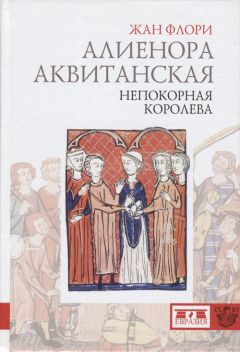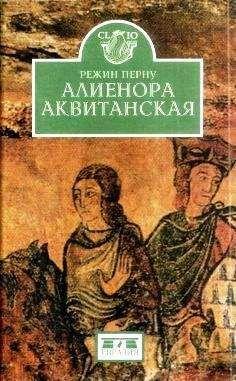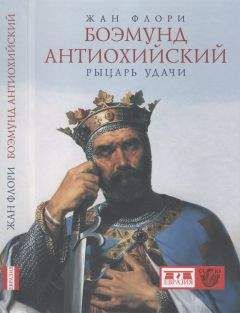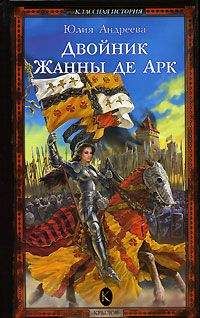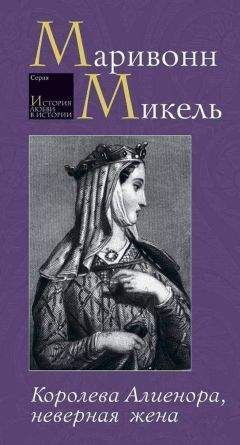780
См. Huneycutt, L. L., Matilda of Scotland and the Development of Medieval Queenship, Woodbridge, 2003.
McCash, J. H., «The Cultural Patronage of Medieval Women: an overview», dans The Cultural Patronage of Medieval Women (éd. McCash, J. H.), Athens (Georgia), 1996, p. 1–49, в частности, p. 6 sq.
Jeanroy, A., La Poésie lyrique de troubadours, Paris, 1934, в частности, p. 426 sq.; Kelly, A., Eleanor of Aquitaine…, op. cit., p. 162 sq., 183 sq.
См. на этот счет очень осторожную позицию Лабанда (Labande, E. R., «Les filles d’Aliénor d’Aquitaine: étude comparative», CCM, 113–114, 1986, p. 101–112).
См. Shadis, M. et Berman, C. H., «A Taste of the Feast: Reconsidering Eleanor of Aquitainès Female Descendants», dans Wheeler, B. et Parsons, J. C., (éd.), op. cit., p. 177–211.
Gobry, L, Louis VII, père de Philippe Auguste, Paris, 2002, p. 170. 3. Келли (Kelly, A. R., «Eleanor of Aquitaine and her Courts of Love», op. cit., p. 3–19) не принимает гипотезы о покровительстве Генриха II, считая, что у него были «слишком простые вкусы» (?!) для того, чтобы создать аристократическую среду такого качества.
См., например, Gouttebroze, J.-G., «Henri II Plantagenêt, patron des historiographes anglo-normands en langue d’o”l», dans La Littérature angevine médiéval, Angers, 1981, p. 91–109.
Brown, E. A. R., «Eleanor of Aquitaine Reconsidered», в Wheeler, В. et Parsons, J. C. (éd.), op. cit., p. 1–54, в частности, p. 3, note 18.
Grant, L., «Le patronage architectural d’Henri II et de son entourage», CCM, 37, 1994, p. 73–84. Об идеологической значимости гробниц Фонтевро см. Nunez Rodriguez, M., «Los “gisants sculptes” de Fontevraud y la estrategia simbolica de la iconografia funeraria сото expresion de poder», dans Poder y sociedad en la Galicia medieval, Santiago de Compostela, 1992, p. 75–109.
Hallam, E. M., «Henry II as a founder of monasteries», dans Journal of Ecclesiastical History 28, 1977, p. 113–132.
См. на этот счет Nolan, K., «The Queen’s Choice: Eleanor of Aquitaine and the Tombs at Fontevraud», dans Wheeler, B. et Parsons, J. C. (éd.), op. cit., p. 377–405, et Wood, Ch. T., «Fontevraud, Dynasticism, and Eleanor of Aquitaine», ibid., p. 407–422.
Cf. Lozinski, J. L., «Henri II, Aliénor d’Aquitaine et la cathédral de Poitiers», CCM, 37, 1994, p. 91–100 et Caviness, M. H. «Anchoress, Abbess and Queen: Donors and Patrons or Intercessors and Matrons?» dans McCash, J. H., éd., The Cultural Patronage of Medieval Women, Athens (Georgia), 1996, p. 105–154.
Caviness, M. H., «Sugar’s Glass at Saint-Denis: The State of Research», dans P. Gerson (éd.), Abbott Suger and Saint-Denis: A Symposium, New York, 1986, p. 267.
См. на этот счет Shadis, M., «Piety, Politics and Power: the Patronage of Leonor of England and her Daughters Berenguela of Léon and Blanche of Castille», dans McCash, J. H., éd., The Cultural Patronage of Medieval Women, Athens (Georgia), 1996, p. 202–227.
Kenaan-Kedar, N.. «The Impact of Eleanor of Aquitaine on the Visual Arts in France», dans Culture politique des Plantagenêts (1154–1224), Poitiers, 2003, p. 39–60.
См. главу 5.
Например, Baltzer, R. A., «Music in the Life and Times of Eleanor of Aquitaine», dans Kibler, W. W. (éd.), Eleanor of Aquitaine, op. cit., p. 61–78, чьи рассуждения покоятся на устаревших концепциях, и Ayers, L. M. «English Painting and the Continent during the Reign of Henry II and Eleanor», ibid., p. 115–146.
Этой гипотезы, заявленной в работе Villepreux, L. de, Éléonore d’Aquitaine, Paris, 1862, p. 99–130, придерживается Рита Лежен (Lejeune R., «Rôle littéraire d’Aliénor d’Aquitaine et de sa famille», Cultura Neolatina, 14, 1954, p. 5–57); позиция P. Лежен, заявленная в работе «Rôle littéraire de la famille d’Aliénor d’Aquitaine» (CCM, 1, 1958, p. 319–336), принята с некоторыми оговорками М. Ледже (Legge, M. D., «La précocité de la littérature anglo-normande», CCM, 8, 1965, p. 327–349) и с еще большими замечаниями Р. Беццолой (Bezzola, R. R., Les origins et formation de la littérature courtoise en Occident, Paris, 1954–1963; III., 1: La cour d’Angleterre comme centre littéraire sous les rois angevins (1154–1190), Paris, 1963, в частности, p. 247–291).
См., например, Gouttebroze, J.-G., «Henri II Plantagenêt, patron des historiographes anglo-normands en langue d’oïl», op. cit.
См. Vincent, N., Vincent, N. «King Henry II and the Poitevins», dans La Cour Plantagenêt (1154–1204), op. cit., p. 103–133, в частности, p. 128–130.
См., например, Haskins, C. H., «Henri II as a Patron of Literature», Essays in Medieval History presented to Thomas Frederick Toul, éd. A. G. Little et F. M. Powicke, Manchester, 1925, p. 71–77; Dronke, P., «Peter of Blois and Poetry at the Court of Henry II», Mediaeval Studies, 38, 1976, p. 185–235.
См. Grandsen, A., Historical Writing in England, v. 500–1307, Londres, 1974; Clanchy, M. T., From memory to Writen Record, England, 1066–1307, Londres, 1979; Blacker, J., «Le geste est grande, longue et grieve a translater: History for Henri II», Romance Quarterly, 37, 1990, p. 387–396; Aurell, M., «La Cour Plantagenêt (1154–1204): entourage, savoir et civilité», dans La Cour Plantagenêt (1154–1204), op. cit., в частности, p. 34 sq.
Далее мы приведем лишь некоторые примеры, касающиеся политической и идеологической интерпретации четы «Генрих-Алиенора». О троянском происхождении франков и нормандцев см. подборку материалов у Faral, E., La Légende arthurienne, t. 1, Paris, 1969, p. 262–293.
Gouttebroze, J.-G., «Henri II Plantagenêt, patron des historiographes anglo-normands en langue d’o”l», op. cit.; Gouttebroze, J.-G., «Pourquoi congédier un historiographe? Henry II Plantagenêt et Wace (1155–1174)», Romania, 112, 1991, p. 289–311; см. также в том же направлении Blacker, J., «”Ne vuil sun livre translater”, Wacès Omission of Merlin’s Prophéties from the Roman de Brut», dans I. Short (éd.), Anglo-Norman Anniversary Essays, Londres, 1993, p. 49–59; автор доказывает, что Вас предпочел не переводить некоторых отрывков у Гальфрида Монмутского, которые могли не понравиться Генриху II.
О понятии пропаганды в литературных произведениях, в частности, в эпопеях, см. Victorio, J., «La chanson de geste comme moyen de propagande», Les Lettres romanes, 33, 1979, p. 309–328; Keller, H. E., «La Chanson de Roland, poème de propagande pour le royaume capétien du milieu du XIIe siècle», Travaux de Linguistique et de Littérature, 14, 1, 1976, p. 229–241; Batany, J., «Propagande carolingienne et mythe carolingien: le programme de Louis le Pieux chez Ermold le Noir et dans le Couronnement de Louis», La chanson de geste et mythe carolingien (Mélanges… R. Louis), St-Père-sous-Vezelay, 1982, p. 313–340; Gosman, M., «La propagande politique dans Le Voyage de Charlemagne à Jérusalem et à Constantinople», Zeitschrift für Romanische Philologie, 102, 1–2, 1986, p. 53–66; Gosman, M., «”Rex Franciae, Rex Francorum”: la chanson de geste et la propagande de la royauté», dans Van Dijk, H. et Noomen, W. (éd.), Aspects de l’épopée romane: mentalités, idéologies, intertextualités, Groningen, 1995, p. 451–460; о пропаганде в артуровских романах см. также Chauou, A., «Faire l’histoire: la culture historique à la cour Plantagenêt et les réseaux ecclésiastiques (1154–1199)», dans Culture politique des Plantagenêts (1154–1224), Poitiers, 2003, p. 269–286.
См., например, Flori, J., «Ambroise, propagateur de l’idéologie Plantagenêt?», dans Culture politique…, op. cit., p. 173–187.
Pappano, M. A., «Territorial Desire: Bernart de Ventadorn’s Plantagenêt Poems and Marie de Francès Chievrefueil», dans Culture politique…, op. cit., p. 61–74.
См. очень смелую гипотезу Carman, J. N., A Study of the Pseudo-Map Cycle of Arthurian Romance, Lawrence, 1973.
Bezzola, R. R., Les origines…, op. cit., t. III, 1, p. 257 sq.
Tyson, D. B., «Patronage of French Vernacular History Writers in the Twelfth and Thirteenth Centuries», Romania, 100, 1979, p. 180–222.
См., в частности, исследование Boutet, D., Charlemagne et Arthur ou le roi imaginaire, Paris, 1992.
Wace, Le Roman de Rou, éd. A.J. Holden, Paris, t. I, 1970, p. 167–168; о роли этой функции см. Gouttebroze, J.-G., «Entre les historiographes d’expression latine et les jongleurs, le clerc lisant», dans Le Clerc au Moyen Âge (Senefiance, № 37), 1995, p. 215–230.
Wace, Le Roman de Rou, op. cit., t. II, p. 307. Benoit de Sainte-Maure, La Chronique des ducs de Normandie par Benoit, éd. C. Fahlin, Uppsala, 1951–1954, t. II, 572, vers 42041–42050.
(В тексте бумажной книги ссылка на это примечание отсутствует. Прим. верстальщика.)
Gouttebroze, J.-G., «Pourquoi congédier un historiographe? Henry II Plantagenêt et Wace (1155–1174)», op. cit., p. 289–311.
Bozoky, E., «Le culte des saints et des reliques dans la politique des premiers rois Plantagenêts» в La Cour Plantagenêt, Poitiers, 2000, p. 277–311.
Lodge A., «Literature and History in the Chronicle of Jordan Fantosme», French Studies, 44, 1990, p. 257–270, в частности, p. 263 sq.
Legge, M. D., Anglo-Norman Literature and its Background, Oxford, 1963, p. 75.
Broadhurst, K. M., «Henri II of England and Eleanor of Aquitaine: Patrons of literature in French?», Viator, 27, 1996, p. 53–84.
Layamon, Brut, v. 20–23, перевод и примечания R. Allen, Londres, 1992.
См. на этот счет соответствующий анализ у Bouchard, C. B., Strong of Body, Brave and Noble. Chivalry and Society in Medieval France, Ithaca-Londres, 1988, и у Flori, J., Chevaliers et chevalerie au Moyen Âge, Paris, 1998.
E. Baumgartner во введении к изданию «Романа о Трое». См. Benoit de Sainte-Maure, Le roman de Troie, éd. et trad. E. Baumgartner et F. Vielliard, Paris, 1998, p. 5.
Wace, Le Roman de Rou, éd. A.J. Holden, Paris, t. I, 1970, v. 17–42, p. 3–4. Далее на страницах своего произведения Вас часто намекает на щедрость своих могущественных покровителей, которых он считает слишком незначительными по сравнению с великими королями прошлого. См., например, стихи 7–17, p. 3, а также начало третьей части, v. 143–176, t. II, p. 167, где Вас жалуется на то, что получал от предшественников Генриха слова одобрения и поощрения, обещания, но не вознаграждения. И, напротив, Генрих II дал ему пропитание в Байё и «множество других даров».
